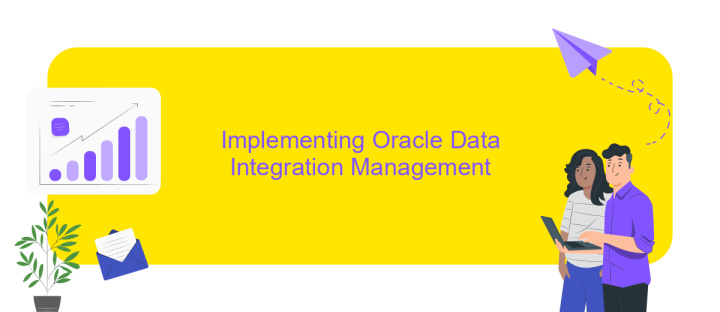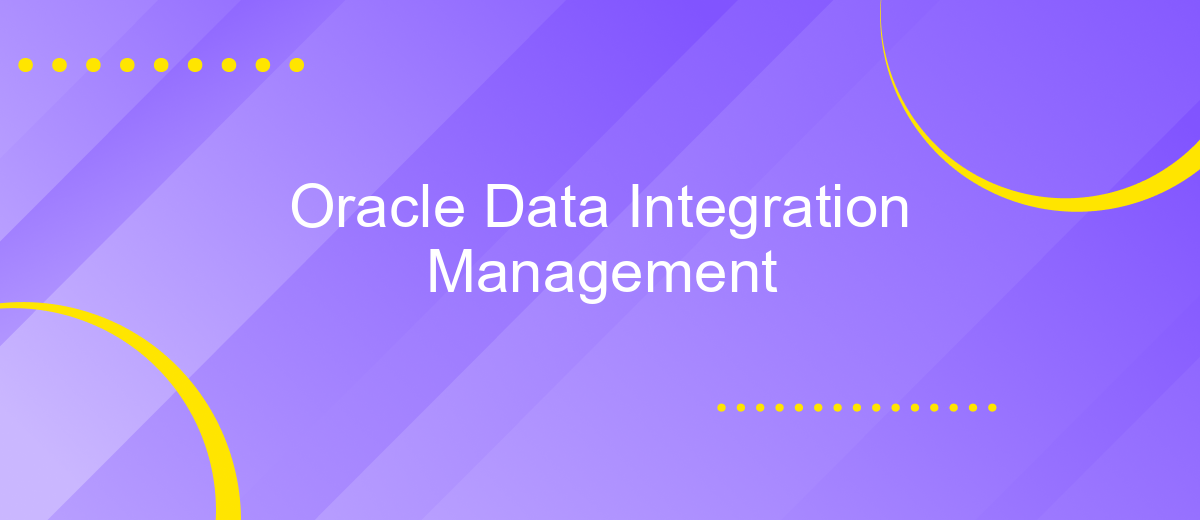Oracle Data Integration Management
Oracle Data Integration Management is a comprehensive solution designed to streamline and enhance data integration processes across diverse platforms. It enables organizations to efficiently manage, transform, and govern data, ensuring high-quality and consistent information flow. By leveraging Oracle's robust suite of tools, businesses can optimize their data strategies, improve decision-making, and drive innovation in a competitive landscape.
Understanding Oracle Data Integration Management
Oracle Data Integration Management is a comprehensive solution designed to facilitate seamless data movement, transformation, and synchronization across diverse systems. It provides a unified platform to manage data integration processes efficiently, ensuring data consistency and accuracy. By leveraging Oracle's robust architecture, organizations can streamline their data workflows, enhancing decision-making and operational efficiency.
- Data Movement: Enables efficient data transfer across heterogeneous systems, minimizing latency and maximizing throughput.
- Data Transformation: Offers powerful tools for data cleansing, enrichment, and transformation to meet business requirements.
- Data Synchronization: Ensures real-time data consistency across multiple platforms, supporting dynamic business environments.
- Scalability: Scales seamlessly to accommodate growing data volumes and complex integration needs.
- Security: Implements robust security measures to protect sensitive data during integration processes.
Utilizing Oracle Data Integration Management, businesses can achieve a holistic view of their data landscape, enabling informed decision-making and strategic planning. Its flexible architecture supports both on-premises and cloud environments, offering adaptability to evolving technological trends. By integrating data from various sources, organizations can unlock the full potential of their information assets, driving innovation and competitive advantage.
Key Features and Capabilities

Oracle Data Integration Management offers a robust suite of features designed to streamline data processes across diverse systems. It provides comprehensive data integration tools that support real-time and batch processing, ensuring seamless data flow and consistency. The platform's advanced data transformation capabilities enable users to convert and enrich data efficiently, supporting complex business requirements. Additionally, Oracle’s integration solutions are known for their scalability and flexibility, allowing organizations to adapt quickly to changing data landscapes.
One of the standout features is its intuitive interface, which simplifies the configuration of integrations. This is complemented by services like ApiX-Drive, which further enhance integration capabilities by allowing users to connect and automate workflows without extensive coding. With robust security protocols, Oracle ensures that data remains protected throughout the integration process. Furthermore, the platform supports a wide range of data sources and targets, making it a versatile choice for businesses aiming to unify their data ecosystems. Overall, Oracle Data Integration Management empowers organizations to optimize their data strategies effectively.
Implementing Oracle Data Integration Management

Implementing Oracle Data Integration Management involves a strategic approach to streamline data processes across an organization. Begin by assessing the current data landscape to identify integration needs and existing challenges. This foundational understanding will guide the configuration and deployment of Oracle's integration tools, ensuring they align with business objectives and technical requirements. Comprehensive planning and stakeholder engagement are crucial for successful implementation.
- Conduct a thorough analysis of existing data systems and workflows.
- Define integration goals and key performance indicators (KPIs).
- Select appropriate Oracle Data Integration tools and technologies.
- Develop a detailed implementation roadmap with timelines and milestones.
- Execute the integration plan, ensuring regular monitoring and adjustments.
Post-implementation, it's essential to evaluate the performance of the integrated system against predefined KPIs. Continuous monitoring and optimization ensure the integration remains effective and adaptable to evolving business needs. Training and support for users are also vital to maximize the benefits of Oracle Data Integration Management, fostering a data-driven culture within the organization.
Best Practices and Optimization Techniques

To maximize the efficiency of Oracle Data Integration Management, it is crucial to adopt best practices that streamline processes and enhance performance. Start by ensuring that your data models are well-designed, focusing on normalization and indexing to improve query speed. Regularly update your Oracle software to benefit from the latest features and security patches.
Another key aspect is efficient resource management. Allocate sufficient memory and CPU resources to your Oracle environment to prevent bottlenecks. Monitor system performance continuously using Oracle Enterprise Manager to identify and resolve issues promptly.
- Utilize parallel processing to accelerate data loading and transformation tasks.
- Implement data partitioning strategies to enhance query performance.
- Use Oracle's built-in optimization tools, such as the SQL Tuning Advisor, to fine-tune queries.
- Regularly back up data and configurations to prevent data loss and facilitate recovery.
Finally, ensure that your team is well-trained in Oracle best practices. Regular training sessions and workshops can help maintain a high level of expertise, enabling your organization to fully leverage Oracle Data Integration Management's capabilities. By following these strategies, you can optimize your data integration processes effectively.
- Automate the work of an online store or landing
- Empower through integration
- Don't spend money on programmers and integrators
- Save time by automating routine tasks
Benefits and Use Cases
Oracle Data Integration Management offers a comprehensive suite of tools designed to streamline data processes across diverse systems. One of its primary benefits is the ability to seamlessly integrate data from multiple sources, ensuring consistency and accuracy. This integration capability is crucial for businesses looking to harness insights from vast datasets without the hassle of manual data entry or reconciliation. Additionally, the platform supports real-time data processing, which is essential for organizations that require up-to-date information to make informed decisions swiftly.
In practical use cases, Oracle Data Integration Management can be employed in various industries, from finance to healthcare, where data integrity and speed are paramount. For businesses seeking to simplify the setup of these integrations, services like ApiX-Drive can be invaluable. ApiX-Drive offers an intuitive interface that allows users to configure integrations effortlessly, reducing the time and technical expertise required. By leveraging such services alongside Oracle's powerful data management tools, organizations can achieve a robust, efficient data ecosystem that supports their strategic goals.
FAQ
What is Oracle Data Integration Management?
How can Oracle Data Integration Management benefit my organization?
What are the key features of Oracle Data Integration Management?
How does Oracle Data Integration Management handle real-time data integration?
Are there tools available to automate and simplify the integration processes with Oracle Data Integration Management?
Strive to take your business to the next level, achieve your goals faster and more efficiently? Apix-Drive is your reliable assistant for these tasks. An online service and application connector will help you automate key business processes and get rid of the routine. You and your employees will free up time for important core tasks. Try Apix-Drive features for free to see the effectiveness of the online connector for yourself.


